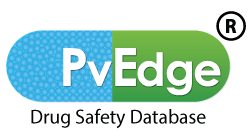Need for this
Pharmacovigilance relies heavily on processing scientific literature to identify potential safety issues. PubMed is a key database for this purpose, providing access to a vast collection of medical and scientific articles. However, manually searching, reviewing, and selecting relevant articles from PubMed is time-consuming, prone to human errors, and limits efficiency. A smarter, automated way to manage these tasks was needed to save time and improve accuracy.
How it Benefits
The PubMed Text Data Mining (TDM) feature offers several key benefits:
Reduced Manual Effort
Improved Accuracy
Enhanced Speed
Streamlined Workflows
Scalability
How We Are Using This in Existing Products
PubMed TDM is an integral enhancement of the PvEdge platform, improving the Literature Access Module (LAM). Here's how it works:
Automated Retrieval : TDM fetches relevant articles from PubMed based on preconfigured search criteria and keywords.
Content Analysis : The system reads and analyzes article content using NLP to identify those important for pharmacovigilance activities.
Data Processing : Automates key tasks, such as duplicate detection, multi-patient identification, case segmentation, and XML generation.
Verification and Reporting : Highlights extracted data for user verification and generates reports for compliance and audit purposes.
Result of Implementation of PubMed TDM

Time Savings
Automated workflows have drastically reduced the time required to process PubMed articles.

Higher Productivity
Staff can now focus on critical tasks, as repetitive manual work is minimized.

Better Accuracy
Advanced algorithms have improved the precision of data extraction and processing.

Scalability
The system easily manages growing volumes of literature, ensuring reliable performance.
